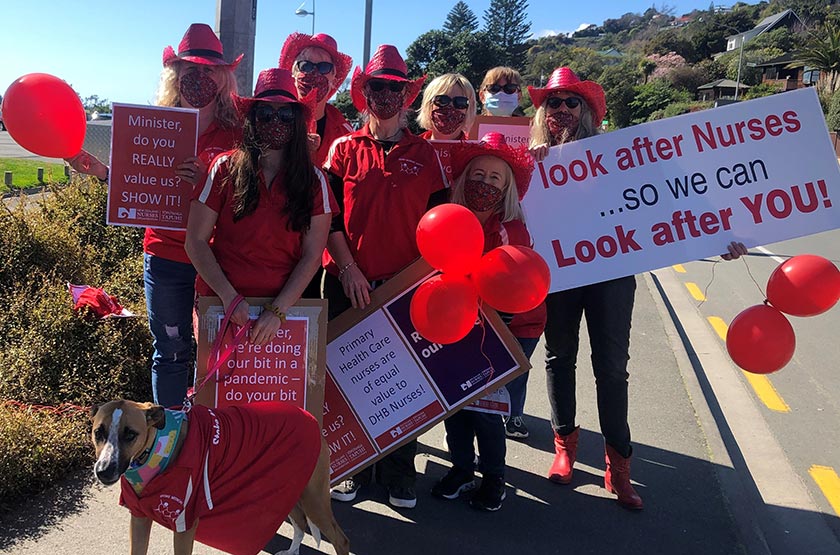At 34 stopwork meetings around the country earlier this month, a resolution for more strike action, if no additional funding for pay parity with district health board (DHB) colleagues was forthcoming by October 14, passed easily.
Nurses are wanting to strike for more than the eight hours they did on September 3. The four options considered at the stopwork meetings were: another eight-hour strike; two eight-hour strikes; one 24-hour strike; and two 24-hour strikes. While still adding up nurses’ responses at press time, PHC industrial adviser Chris Wilson said the trend was for at least a 24-hour strike.
The vote for further strike action comes after a meeting between employers’, Ministry of Health and DHB representatives on September 24. A statement issued afterwards said primary care nurses were seen “as a priority workforce for progressing pay parity. Meeting attendees have agreed to work together on this issue, with an initial focus on the Primary Care MECA”.
But little progress was evident at last-minute negotiations on September 28, when employers had no additional money to put on the table for pay parity.
New Zealand Medical Association (NZMA) chair Kate Baddock said the association was frustrated at the lack of progress. “This is a significant issue and it is taking a long time to gain pay parity for what the ministry and DHBs agree is a priority workforce. It feels like lip service to primary care and its nurses. The funding should already be there.”
Wilson, who has been involved in the PHC sector for more than 30 years, said she had never before witnessed the current level of frustration and anger among nurses. “This latest fight for pay parity has been going on for two years now. We accepted a one-year MECA in 2018 in the hope additional funding would be forthcoming for this MECA. NZMA and NZNO representatives met then Health Minister David Clark in September last year and presented him with detailed evidence of the extent of the pay gap and its implications for the sector. There has been no shortage of information backing up our case for pay parity,” she said. “Nurses are not going to be fobbed off.”
She pointed to the support from employers, including NZMA, Green Cross, GenPro and GPNZ, for pay parity, which NZMA estimates would cost $15 million.
Baddock said it was “understandable” nurses were contemplating further strike action as there had been no resolution to date. “We are hopeful there will be resolution, however we’d like that time frame to be sooner rather than later.”
Wilson said nurses were leaving the sector for jobs in DHBs. “An extra 10.5 per cent [the current pay gap between experienced PHC and DHB nurses] in a pay packet is a lot of money in a household.” Baddock said recruitment was where “the challenge remains”.
NZNO has also written an open letter to Prime Minister Jacinda Ardern calling for her intervention to secure pay parity. The letter asks her to “urgently resolve” the issue, to acknowledge the value of PHC nurses’ work and to “show you want them to continue to use their expertise in keeping us healthy”.


